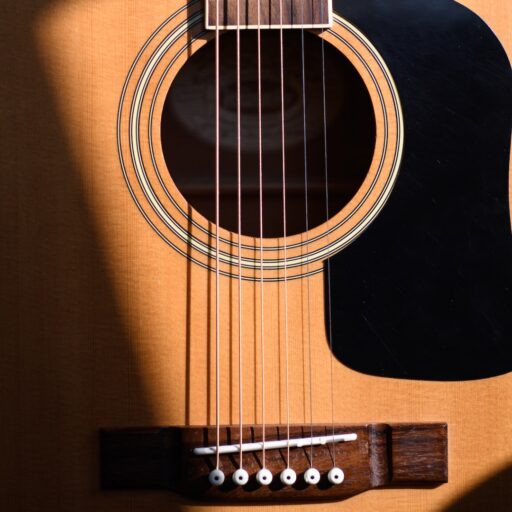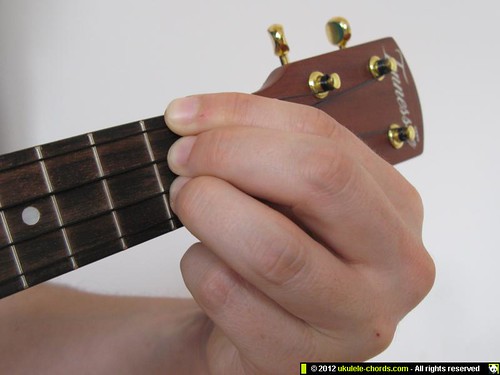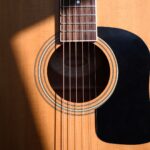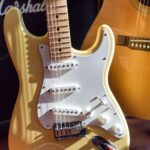Support our educational content for free when you purchase through links on our site. Learn more
7 Ukulele Maintenance Tips 🎸 to Keep Your Uke Perfect (2025)

Imagine this: you’re about to play your favorite song, but your ukulele sounds dull, the strings buzz, or worse — a crack appears on the body. Nightmare, right? At Guitar Brands™, we’ve seen countless players face these frustrating moments simply because their ukulele wasn’t cared for properly. But here’s the good news — with just a few simple maintenance tips, you can keep your uke sounding vibrant and playing smoothly for years to come.
In this comprehensive guide, we’ll walk you through 7 essential ukulele maintenance tips that cover everything from cleaning and string care to humidity control and troubleshooting common issues. Whether you’re a beginner or a seasoned player, mastering these tips will unlock your ukulele’s full potential and save you costly repairs down the road. Ready to become a ukulele care pro? Let’s dive in!
Key Takeaways
- Regular cleaning and wiping after every session prevent grime buildup and preserve your uke’s finish.
- String replacement every 3-6 months keeps your sound bright and tuning stable.
- Proper storage and humidity control are crucial to avoid warping and cracks.
- Fretboard conditioning and setup adjustments improve playability and tone.
- Use trusted maintenance products like Dunlop 65 Polish, Fret Doctor Bore Oil, and UkuleleMate Humidifiers for best results.
- Know when to DIY and when to consult a professional to avoid costly mistakes.
👉 Shop recommended ukulele maintenance products:
- Ukulele Strings on Amazon | Kala Official Website
- Ukulele Humidifiers on Amazon | UkuleleMate Store
- Guitar Polish & Oils on Amazon | Fret Doctor Official
Get ready to keep your ukulele in perfect harmony with these expert tips!
Table of Contents
- ⚡️ Quick Tips and Facts for Ukulele Maintenance
- 🎸 The Story Behind Ukulele Care: Origins and Evolution of Maintenance Practices
- 1️⃣ Essential Ukulele Cleaning Techniques: Keeping Your Instrument Sparkling
- 2️⃣ String Care and Replacement: When and How to Change Your Ukulele Strings
- 3️⃣ Proper Storage Solutions: Protecting Your Ukulele from Damage and Warping
- 4️⃣ Humidity and Temperature Control: The Secret to Longevity
- 5️⃣ Fretboard and Neck Maintenance: Smooth Playing and Intonation Tips
- 6️⃣ Tuning and Setup Adjustments: Fine-Tuning Your Ukulele’s Performance
- 7️⃣ Troubleshooting Common Ukulele Issues: Buzzing, Warping, and More
- 🎁 Best Ukulele Maintenance Products and Tools: Our Top Picks
- 🛠️ DIY Ukulele Repairs: When to Fix It Yourself and When to Call a Pro
- 🎶 Pro Tips from Ukulele Experts: Insider Secrets to Keep Your Uke in Top Shape
- 📚 Recommended Resources and Communities for Ukulele Maintenance Enthusiasts
- 🔚 Conclusion: Mastering Ukulele Maintenance for a Lifetime of Joy
- 🔗 Recommended Links for Further Reading
- ❓ Frequently Asked Questions About Ukulele Maintenance
- 📑 Reference Links and Sources
⚡️ Quick Tips and Facts for Ukulele Maintenance
Welcome to the wonderful world of ukulele care! Whether you’re strumming your first chords or you’re a seasoned uke pro, keeping your ukulele in tip-top shape is essential for great sound and longevity. At Guitar Brands™, we’ve jammed with countless ukuleles and learned a thing or two about maintenance that’ll save you headaches and keep your uke singing sweetly.
Here’s a quick starter pack of essentials to get you going:
- Wipe down your uke after every session with a soft, lint-free cloth to remove oils and sweat.
- Store your ukulele in a case or gig bag to protect it from dust, bumps, and humidity swings.
- Maintain stable humidity (40-60%) to prevent wood cracking or warping — a small humidifier inside the case works wonders.
- Change strings regularly (every 3-6 months or when tone dulls) to keep your sound bright and clear.
- Check your tuning and action often to avoid buzzing or uncomfortable playability.
- Clean and oil the fretboard sparingly with lemon or mineral oil to keep the wood healthy.
- Avoid extreme temperatures — no leaving your uke baking in the car or freezing in the cold!
For a deep dive into each of these and more, keep reading — we’re about to unlock the secrets to ukulele maintenance that pros swear by. 🎶
For more on ukuleles, check out our ukulele guide.
🎸 The Story Behind Ukulele Care: Origins and Evolution of Maintenance Practices
Before we get our hands dirty (or oily), let’s take a quick stroll through the history of ukulele maintenance. The ukulele, born in Hawaii in the late 19th century, was originally crafted from koa wood — a dense, beautiful hardwood that demands respect and care. Early players learned quickly that humidity, temperature, and string care could make or break their instrument’s tone and lifespan.
As ukuleles spread worldwide, maintenance techniques evolved alongside materials and designs. Today, whether you’re rocking a traditional koa Kala or a modern Cordoba with synthetic finishes, the fundamentals remain the same: cleanliness, humidity control, and gentle handling.
Interestingly, modern luthiers have developed specialized oils, polishes, and humidifiers tailored to ukuleles — a far cry from the old days of just wiping with a shirt sleeve! This evolution means you can keep your uke sounding pristine longer than ever before.
Curious about how these practices translate to your uke? Let’s break down the essentials next!
1️⃣ Essential Ukulele Cleaning Techniques: Keeping Your Instrument Sparkling
Cleaning your ukulele isn’t just about looks — it’s about preserving tone, playability, and lifespan. Here’s how to keep your uke gleaming without risking damage.
Daily Wipe-Down
- Use a soft, lint-free microfiber cloth (like those used for glasses) to wipe down strings, fretboard, and body after playing. This removes sweat, oils, and dirt that degrade strings and finish.
- Avoid household cleaners or abrasive cloths — these can strip finishes or scratch delicate wood.
Dealing with Stubborn Dirt
- For dried-on grime, slightly dampen your cloth with water (not soaking wet!) and gently clean the affected area. Immediately dry with a fresh cloth.
- For ukuleles with a gloss finish, a quality guitar polish (e.g., Dunlop 65 Guitar Polish) can be used sparingly. Avoid polish on satin or matte finishes to prevent uneven shine.
Fretboard Cleaning
- Remove strings for a deep clean. Use 0000 steel wool (fine grade) to gently rub the fretboard, removing grime and oxidation from frets.
- Apply a light coat of lemon oil or mineral oil (like Fret Doctor bore oil) to condition the wood — but only 1-2 times a year to avoid over-saturation.
Hardware Buffing
- Buff tuning pegs and strap buttons with a soft cloth. For corroded metal, use a chrome restorer carefully, avoiding gears and tuning posts.
Pro Tip: Keep a dedicated cleaning kit in your ukulele case for quick touch-ups on the go!
2️⃣ String Care and Replacement: When and How to Change Your Ukulele Strings
Strings are the voice of your ukulele — and like any singer, they need care and occasional restarts.
| Aspect | Rating (1-10) | Notes |
|---|---|---|
| Ease of Replacement | 9 | Nylon strings are easy to tie and replace. |
| Sound Quality | 8 | Fresh strings brighten tone significantly. |
| Durability | 6 | Strings wear out with sweat and playtime. |
| Cost-Effectiveness | 8 | Affordable, but quality varies by brand. |
When to Change Strings
- If your strings sound dull, flat, or have lost their “zing,” it’s time for a change.
- Frequent players should replace every 3-6 months; casual players can stretch it longer but watch for corrosion or fraying.
How to Replace Strings — Step by Step
- Loosen and remove old strings one at a time to maintain bridge tension.
- Clean the fretboard while strings are off.
- Tie the new nylon strings properly at the bridge — Kala and Aquila strings require a secure knot.
- Wind the strings onto tuning pegs neatly, leaving some slack for tuning stability.
- Stretch strings gently by pulling away from the fretboard to settle tuning.
- Tune up slowly, repeating stretching and tuning until stable.
Recommended Strings
- Aquila Nylgut Strings: Known for warm tone and durability.
- D’Addario EJ82: Bright, balanced sound, great for beginners.
- Kala Aquila Strings: The official Kala set, excellent for Kala ukuleles.
👉 CHECK PRICE on:
3️⃣ Proper Storage Solutions: Protecting Your Ukulele from Damage and Warping
Your ukulele’s home matters as much as your playing technique! Improper storage can lead to warping, cracks, and lost tone.
Case or Gig Bag?
- Hard cases offer the best protection against impacts and humidity changes — ideal for travel or gigging.
- Padded gig bags are lightweight and great for home storage or casual transport.
- Wall mounts or stands are fine for short-term display but expose your uke to dust and temperature swings.
Humidity Control
- Wood is a living material that expands and contracts with humidity. Too dry (<40%) causes cracks; too wet (>60%) causes swelling and buzzing.
- Use a ukulele humidifier inside the case if you live in dry climates or during winter heating seasons.
- Conversely, a dehumidifier helps in overly humid environments.
Temperature Tips
- Avoid leaving your uke in direct sunlight, cars, or near heaters/air conditioners.
- Sudden temperature changes can cause glue joints to fail or wood to warp.
Pro Tip: Store your ukulele in a room with stable temperature and humidity, ideally around 70°F (21°C) and 50% humidity.
4️⃣ Humidity and Temperature Control: The Secret to Longevity
Let’s dig deeper into the climate factors that can make or break your ukulele’s lifespan.
| Factor | Ideal Range | Effects if Outside Range |
|---|---|---|
| Humidity | 40% – 60% | Too low: cracks, fret sprout; too high: swelling, buzzing |
| Temperature | 65°F – 75°F (18°C-24°C) | Extreme heat/cold: glue failure, warping |
Tools to Maintain Ideal Conditions
- Ukulele humidifiers: Small devices that release moisture inside your case. Popular models include the UkuleleMate Humidifier.
- Hygrometers: Measure humidity inside your case or room.
- Room humidifiers/dehumidifiers: For whole-room climate control.
Anecdote from the Pros
One of our team members once left a prized koa ukulele in a dry hotel room during winter. Within days, a small crack appeared near the soundhole! Lesson learned: always pack a humidifier for travel.
5️⃣ Fretboard and Neck Maintenance: Smooth Playing and Intonation Tips
The fretboard and neck are your uke’s playability heart — keeping them clean and properly adjusted makes playing a joy.
Cleaning the Fretboard
- Remove strings for best access.
- Use 0000 steel wool to gently remove grime and tarnish from frets and wood.
- Apply a light coat of lemon or mineral oil sparingly to condition the wood (avoid over-oiling).
Neck Adjustment and Action
- Check the action — the string height above the fretboard. Too high = hard to play; too low = buzzing.
- Most ukuleles have a fixed neck, but some models (like Kala’s higher-end ukes) allow truss rod adjustments.
- If buzzing or intonation issues persist, consult a luthier or experienced technician.
Intonation Check
- Play notes at the 12th fret and compare to the open string pitch.
- If sharp or flat, it may require saddle adjustment or fret leveling.
6️⃣ Tuning and Setup Adjustments: Fine-Tuning Your Ukulele’s Performance
A well-tuned ukulele is a happy ukulele! Beyond tuning, setup tweaks can elevate your playing experience.
Tuning Tips
- Use a reliable tuner app or clip-on tuner (e.g., Snark SN5X).
- Tune slowly and stretch new strings to stabilize pitch.
- Regularly check tuning, especially after temperature or humidity changes.
Setup Adjustments
- Adjust string height by sanding the saddle or adjusting nut slots if buzzing or difficulty fretting notes.
- Replace worn or uneven frets for smooth playability.
- For electric ukuleles, check pickup height and battery condition regularly.
7️⃣ Troubleshooting Common Ukulele Issues: Buzzing, Warping, and More
Even with the best care, ukuleles can develop issues. Here’s how to spot and fix common problems:
| Issue | Symptoms | Possible Causes | Solutions |
|---|---|---|---|
| Buzzing Strings | Rattling or buzzing sound | Low action, loose frets, warped neck | Adjust saddle, fret leveling, luthier check |
| Warped Neck | Bowing or twisting | Humidity or temperature extremes | Controlled environment, professional repair |
| Cracks in Body | Visible splits or sound changes | Dry wood, impact damage | Humidify, professional repair |
| Tuning Instability | Frequent detuning | Old strings, loose tuning pegs | Replace strings, tighten pegs |
If you’re unsure, it’s always safer to consult a qualified luthier.
🎁 Best Ukulele Maintenance Products and Tools: Our Top Picks
Let’s talk gear! Here’s a quick rating table of some top ukulele maintenance products we recommend at Guitar Brands™:
| Product | Design | Functionality | Ease of Use | Value | Overall |
|---|---|---|---|---|---|
| Dunlop 65 Guitar Polish | 9 | 9 | 9 | 8 | 8.8 |
| Fret Doctor Bore Oil | 8 | 9 | 8 | 9 | 8.5 |
| UkuleleMate Humidifier | 8 | 9 | 9 | 8 | 8.5 |
| Snark SN5X Clip-On Tuner | 9 | 10 | 10 | 9 | 9.5 |
| Kala Gig Bag | 8 | 8 | 9 | 8 | 8.2 |
Product Highlights
Dunlop 65 Guitar Polish
- Trusted by pros for gloss finish ukuleles.
- Removes fingerprints and light grime without damaging finish.
- Use sparingly to avoid buildup.
Fret Doctor Bore Oil
- Natural oil originally for woodwind instruments.
- Conditions fretboards without sticky residue.
- Apply twice a year max.
UkuleleMate Humidifier
- Compact, easy to use inside any case.
- Maintains ideal humidity for koa and mahogany ukuleles.
Snark SN5X Tuner
- Highly accurate, fast response.
- Easy to clip on and read in any light.
Kala Gig Bag
- Lightweight, padded protection.
- Perfect for home storage and light travel.
👉 Shop these products on:
🛠️ DIY Ukulele Repairs: When to Fix It Yourself and When to Call a Pro
Feeling handy? Some ukulele repairs are perfect for DIY, while others need a pro’s touch. Here’s how to decide:
DIY-Friendly Repairs
- String replacement and tuning peg tightening — straightforward with basic tools.
- Cleaning and fretboard oiling — safe with proper products and care.
- Saddle or nut sanding — small adjustments to action can be done carefully.
Leave to the Pros
- Cracks or structural damage — require expert glue and clamping techniques.
- Neck warping or truss rod adjustments (if applicable).
- Pickup installation or electronics repairs — avoid damaging wiring or components.
- Fret leveling or replacement — requires specialized tools and skill.
Pro Tip: If you’re unsure, take photos and consult online forums or local luthiers before attempting repairs.
🎶 Pro Tips from Ukulele Experts: Insider Secrets to Keep Your Uke in Top Shape
We asked some of the top ukulele players and luthiers for their best maintenance hacks. Here’s what they said:
- “Play it often!” — Regular playing keeps strings clean and wood conditioned naturally.
- “Use a humidifier religiously.” — Even if you live in a humid place, indoor heating can dry out your uke.
- “Don’t overwind your tuning pegs.” — This stresses the peg and can cause slipping or breakage.
- “Keep a microfiber cloth in your case.” — Wipe down after every session to prevent grime buildup.
- “Rotate your strings.” — If you notice uneven wear, swapping string positions can extend their life.
One expert shared a story about a vintage Martin ukulele saved from cracking by simply introducing a humidifier during a dry winter — proof that small steps pay off big!
📚 Recommended Resources and Communities for Ukulele Maintenance Enthusiasts
Want to dive deeper or connect with fellow uke lovers? Here are some top resources:
- UkuleleMate Blog: Maintenance Tips — excellent practical advice and product recommendations.
- Kala Brand Music Co. Maintenance Page: Official Guide — detailed care instructions from a top ukulele maker.
- Got A Ukulele Blog: Cleaning and Care Tips — beginner-friendly and thorough.
- Reddit r/ukulele: A vibrant community for questions, tips, and sharing experiences.
- YouTube Channels: Look for tutorials by JustinGuitar and Cynthia Lin for hands-on maintenance demos.
For more gear and brand insights, explore our Guitar Brands Showcase and Guitar Buying Guide.
🔚 Conclusion: Mastering Ukulele Maintenance for a Lifetime of Joy
There you have it — the ultimate ukulele maintenance playbook from the team at Guitar Brands™! From the daily wipe-downs to the humidity control secrets, and from string care to pro-level troubleshooting, you’re now armed with everything you need to keep your ukulele sounding sweet and looking sharp for years to come.
Remember, your ukulele is a living instrument that thrives on consistent care and attention. Neglect it, and you risk cracked wood, buzzing strings, or lost tone. But treat it right — and your uke will reward you with rich, vibrant sound and effortless playability.
If you’re just starting out, focus on the basics: wipe it down after playing, store it properly, and change strings regularly. As you grow more confident, dive into fretboard conditioning, setup tweaks, and even minor repairs. And when in doubt, don’t hesitate to seek a pro — a skilled luthier can save your uke from serious damage.
We hope our insider tips and product recommendations help you enjoy your ukulele journey even more. Now, go ahead — pick up that uke, strum a chord, and let the music flow! 🎶
🔗 Recommended Links for Further Reading and Shopping
Ready to gear up with the best maintenance products and dive deeper into ukulele care? Check out these trusted picks and resources:
- Dunlop 65 Guitar Polish:
Amazon | Guitar Center - Fret Doctor Bore Oil:
Amazon | Kala Official Website - UkuleleMate Humidifier:
UkuleleMate Store | Amazon - Snark SN5X Clip-On Tuner:
Amazon | Sweetwater - Kala Gig Bag:
Kala Official Website | Amazon
Books on Ukulele Maintenance & Care:
- Ukulele Maintenance and Repair by Jim Beloff — Amazon
- The Ukulele Handbook by Gavin Pretor-Pinney & Tom Hodgkinson — Amazon
❓ Frequently Asked Questions About Ukulele Maintenance
How often should I change the strings on my ukulele to maintain its sound quality?
Changing strings every 3 to 6 months is a good rule of thumb for regular players. If you play daily or gig frequently, aim closer to 3 months. Casual players can stretch it longer but watch for signs of dull tone, tuning instability, or visible wear. Old strings lose their brightness and can negatively affect your uke’s sound and playability.
What are the best ways to clean and condition my ukulele’s body and neck?
Use a soft, lint-free microfiber cloth to wipe down your ukulele after every session to remove oils and dirt. For stubborn grime, a slightly damp cloth works, but dry immediately. For gloss finishes, a quality guitar polish like Dunlop 65 can be used sparingly. Avoid polish on satin or matte finishes to prevent uneven shine.
For the fretboard, remove strings and gently clean with 0000 steel wool to remove grime and oxidation. Condition the fretboard 1-2 times a year with lemon or mineral oil (e.g., Fret Doctor bore oil) to keep the wood healthy without over-saturating.
Can I use household items to humidify my ukulele, or do I need a specialized humidifier?
While some DIY methods exist (like damp sponges or cloths), specialized ukulele humidifiers are safer and more effective. They provide controlled moisture release without risking mold, water damage, or uneven humidity. Products like the UkuleleMate Humidifier are designed specifically for ukulele cases and maintain ideal humidity levels (40-60%). Avoid placing your uke near open water or in plastic bags with wet materials, as this can cause damage.
How do I store my ukulele to prevent damage and maintain its playing condition?
Store your ukulele in a quality case or gig bag when not in use to protect it from dust, bumps, and humidity swings. Keep it in a room with stable temperature (65-75°F) and humidity (40-60%). Avoid direct sunlight, extreme heat, cold, or leaving it in cars. If displaying on a stand, ensure the environment is controlled and clean. Use a humidifier inside the case if you live in dry climates or during winter heating seasons.
What are the most common ukulele maintenance mistakes that beginners make?
- Neglecting humidity control: Leading to cracks or warping.
- Over-polishing: Using too much polish or the wrong type on satin finishes.
- Ignoring string wear: Playing on old strings that dull tone and cause tuning issues.
- Improper storage: Leaving the uke exposed to temperature extremes or physical damage.
- Attempting complex repairs without experience: Leading to further damage.
How can I adjust the action on my ukulele to improve its playability and sound?
Action adjustment usually involves sanding the saddle to lower string height or replacing it with a different size. Some ukuleles have adjustable truss rods for neck relief, but many do not. If you experience buzzing or difficulty fretting notes, a professional setup is recommended. Minor nut slot filing can also help. Always proceed carefully to avoid permanent damage.
Are there any specific maintenance tasks that I should perform regularly to extend the life of my ukulele?
Yes! Here’s a quick checklist:
- Wipe down strings and body after each use.
- Check tuning and action regularly.
- Change strings every few months or when tone fades.
- Condition fretboard 1-2 times per year.
- Maintain proper humidity with a humidifier.
- Store in a protective case away from extreme conditions.
- Inspect hardware and tighten loose parts as needed.
📑 Reference Links and Sources
- UkuleleMate: How to Maintain Your Ukulele
- Got A Ukulele: Beginner Tips for Cleaning
- Kala Brand Music Co. Maintenance Guide
- Dunlop Guitar Polish Product Page
- Fret Doctor Bore Oil Information
- Snark SN5X Tuner Details
- UkuleleMate Humidifier Product
For more ukulele and guitar insights, visit our Guitar Brands Showcase and Guitar Buying Guide.






